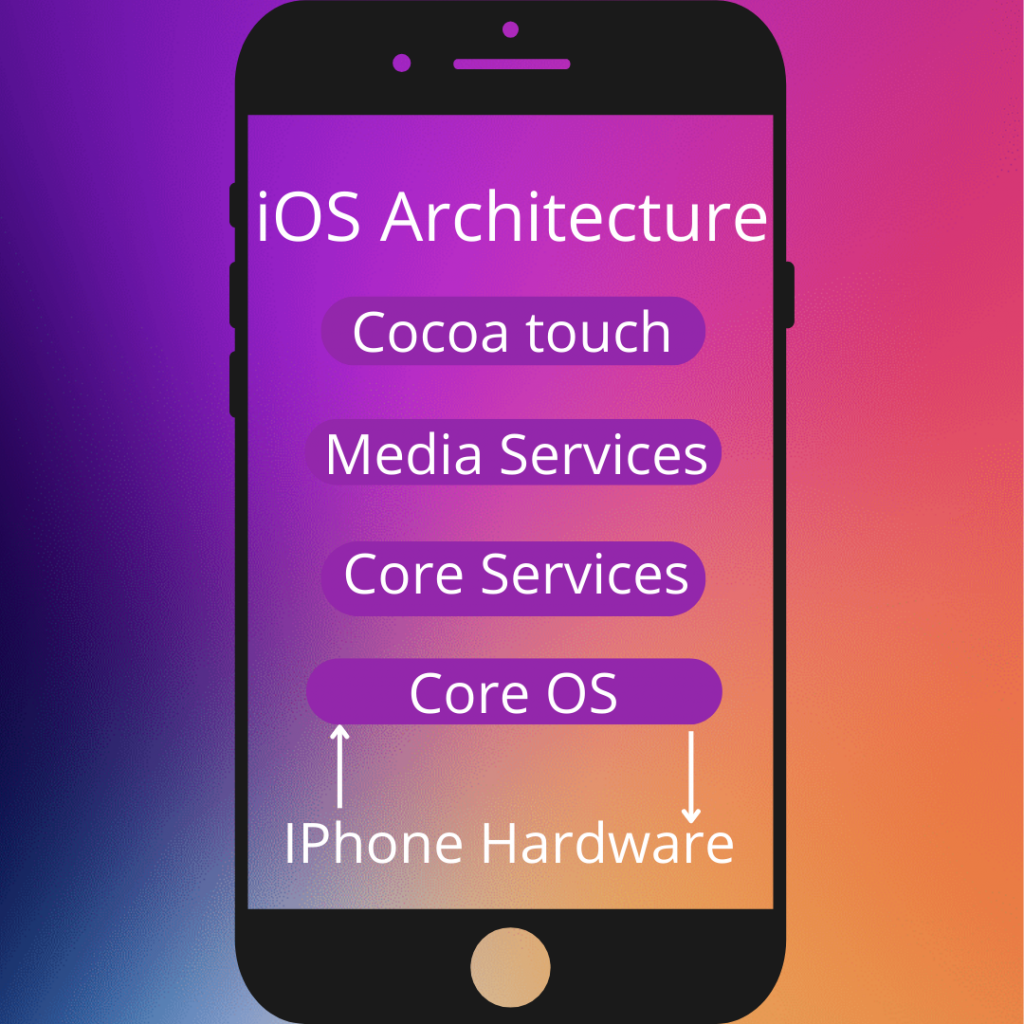
iOS Architecture
iOS operates in a Layered structure. iOS Architecture is comprised of four layers, each of which offers a programming framework for creating applications that operate on top of the hardware. Communication will be enhanced by the layers between the Application Layer and the Hardware Layer. A lower-level layer provides the services that all applications require, while an upper-level layer (or high-level layer) provides graphics and interface-related services.
- Core OS ( or Application) Layer: Core OS Layer sits directly on top of the device hardware and is the bottom layer of the iPhone OS stack. In addition to basic operating system services, such as memory management, handling of file systems, and threads, this layer provides low-level networking, access to external accessories, etc.
- Service Layer: Its purpose is to design the services that upper layers or users demand. Among its other essential features are block objects, Grand Central Dispatch, in-app purchases, and iCloud storage. The service layer has been strengthened by the addition of ARC Automatic Reference Counting.
- Media Layer: It handles media like video, audio, graphics, etc. The media layer will allow us to use all graphics, video, and audio technology of the system.
- Cocoa Touch Layer: It is also known as the application layer. This is the place where frameworks are created when applications are built. In addition, it functions as the interface for iOS users to work with the operating system. This includes touch and motion capabilities.